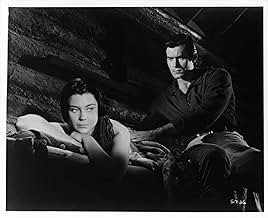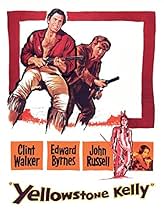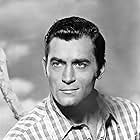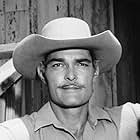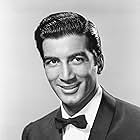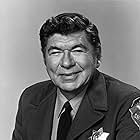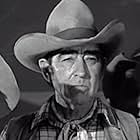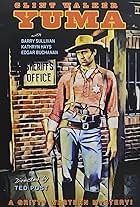IMDb RATING
6.6/10
1.3K
YOUR RATING
In 1870s, in the Sioux territory south of the Missouri, trapper and Indian scout Luther Yellowstone Kelly is hired by the army at Fort Buford but runs into trouble with the Sioux.In 1870s, in the Sioux territory south of the Missouri, trapper and Indian scout Luther Yellowstone Kelly is hired by the army at Fort Buford but runs into trouble with the Sioux.In 1870s, in the Sioux territory south of the Missouri, trapper and Indian scout Luther Yellowstone Kelly is hired by the army at Fort Buford but runs into trouble with the Sioux.
Edd Byrnes
- Anse Harper
- (as Edward Byrnes)
George American Horse
- Indian
- (uncredited)
David Armstrong
- Trooper
- (uncredited)
Emile Avery
- Ship Passenger
- (uncredited)
George Bell
- Trapper
- (uncredited)
Ray Beltram
- Indian
- (uncredited)
Chris Willow Bird
- Indian
- (uncredited)
Nesdon Booth
- Reed - Burly Soldier
- (uncredited)
Buff Brady
- Helmsman
- (uncredited)
Roydon Clark
- Trooper
- (uncredited)
- Director
- Writers
- All cast & crew
- Production, box office & more at IMDbPro
Storyline
Did you know
- TriviaThe horse ridden by Kelly is the same one that Clint Walker rode most of the time in the television series, Cheyenne (1955). The horse, named Brandy, can be identified by the large white blaze and the white spot on its right hip.
- GoofsThe Lakota and Arapahoe tribes were allies. They sometimes lived side by side and intermarried. For the Lakota (Gall's tribe) to hold an Arapahoe captive would have been unconscionable.
- Quotes
Major Towns: In other words, you refuse.
Yellowstone Kelly: In any words, I refuse.
- Crazy creditsOpening credits: The West was opened by courageous trail-blazing pioneers like Lewis & Clark and Luther "Yellowstone" Kelly, - - trapper, surveyor, and indian scout who was the first frontiersman to cross the mighty Yellowstone Valley.
- ConnectionsReferenced in Best of Bandstand (1986)
Featured review
This unpretentious and well-paced film min my judgment almost redefines the 'B' movie. It uses the talents of solid-plot novelist Clay Fisher, action director Gordon Douglas's skills, script additions by Burt Kennedy, lucid cinematography by Carl Guthrie, costumes by Marjorie Best, set decorations by William Wallace and a good cast of supporting actors. The storyline is a very simple one. Luther Kelloey has saved the life of a Sioux chief, Gall. Because of this during the troubles in their country, he is still allowed to set his traplines. After some trouble with toughs at a fort, he enlists young tenderfoot Anse Harper as his helper--before discovering he is hopeless at everything; then Kelley heads upcountry. Once there, they save an Arapaho woman fleeing her enemies. Answe worships her; she falls in love with Kelley, but he fights the urge as he nurses her back to health. Then all discover that it is the Sioux chief who wants her back. Anse dies; and finally he has to lead soldiers against the Sioux to save the ill-led patrol; and he kills Gall's nephew, the real troublemaker in the situation, in battle. He then advises the Sioux chief to leave the Yellowstone country, telling him it no longer smiles on them; and they follow his advice. The film stars popular and very large Clint Walker, in the best of several western he was allowed to make in the 1950s, as who did not; Anse is well-done by Edd Byrnes, John Russell is the Sioux chief, Ray Danton the deadly nephew and Andra Martin the lovely Arapaho woman. Claude Akins as a skeptical sergeant, Rex Reason, Gary Vinson and Warren Oates are also featured. This is a very authentic western, physically-beautiful. The viewer learns a lot about what it takes to survive in the West through the very Eastern eyes of Anse; also, Kelley's very sound advice is doubted, not heeded or contradicted by soldiers, with the result that they need him to save their hides. This is not a great picture; but I suggest as a writer its authors gave it clear motivations, a solid story line for its under-budgeted producers to realize. The dialogue is above average, terse, never show; and Douglas's camera has quite a bit to work with in the way of interior dialogue exchanges, action scenes and angry confrontations. The highlight comes when Martin tells Walker, "You have LOOKED AT ME." From that moment, we know he likes her, she wants him--and all they have to do is fight a major battle against angry Sioux warriors to win their future...Many viewers have found this to be a very unpretentious and entertaining 'B' effort.
- silverscreen888
- Jul 12, 2005
- Permalink
Details
- Release date
- Country of origin
- Language
- Also known as
- Man nannte ihn Kelly
- Filming locations
- Production company
- See more company credits at IMDbPro
- Runtime1 hour 31 minutes
- Aspect ratio
- 1.37 : 1
Contribute to this page
Suggest an edit or add missing content



